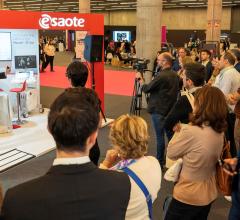
September 11, 2014 — Growing awareness of the harmful effects of radiation exposure is driving the uptake of ultrasound systems, which are radiation free, less expensive, and more versatile than bigger modalities such as magnetic resonance (MR). The numerous benefits that ultrasound procedures provide have encouraged many small hospitals and primary care centers in Europe to adopt the technology.
New analysis from Frost & Sullivan, “Analysis of the European Ultrasound Market,” finds that the market earned revenues of $1.38 billion in 2013 and estimates this to reach $1.68 billion in 2019. Key end-user segments covered in this study include radiology, obstetrics and gynecology, surgery and cardiology.
While several primary care centers are employing the latest ultrasound technology for the first time, there are a few centers that are replacing obsolete systems with more compact, advanced solutions. Hospitals are also looking for portable ultrasound equipment that will not only aid them in diagnosis and non-invasive procedures but also comfortably fit in the limited space that they have available.
"The use of ultrasound systems as a diagnostic tool right from the initial point of consultation meets the increasing demand for screening and helps in streamlining treatment workflow," said Frost & Sullivan Healthcare Research Analyst Raghuraman Madanagopal. "Further, the ability to report diagnostic images instantly has been a core reason for the adoption of these systems, particularly in emergency medicines and intensive care units."
Competition from Asian vendors providing high-quality ultrasound equipment at lower prices puts pressure on established suppliers to adjust their prices, especially in price sensitive economies. Certain vendors even specialize in niche segments such as surgical ultrasound, producing cheap yet quality systems.
In such a scenario, technological innovation will define competitive dynamics. Ultrasound manufacturers, both global and niche, must develop equipment with a smaller footprint that can used in a wide range of applications.
"Manufacturers are shifting focus towards mobile systems with real-time imaging, volume imaging as well as 3-D and 4-D transducers to meet both diagnostic and image guidance needs for interventional purposes," stated Madanagopal. "More niche players catering to specific applications are also expected to adopt these technologies to stay competitive in the European ultrasound market."
For more information: www.frost.com


 August 27, 2024
August 27, 2024 








